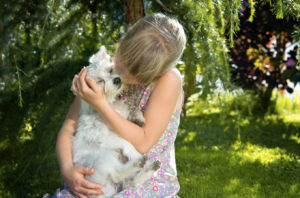What You Need to Crate Train a Puppy
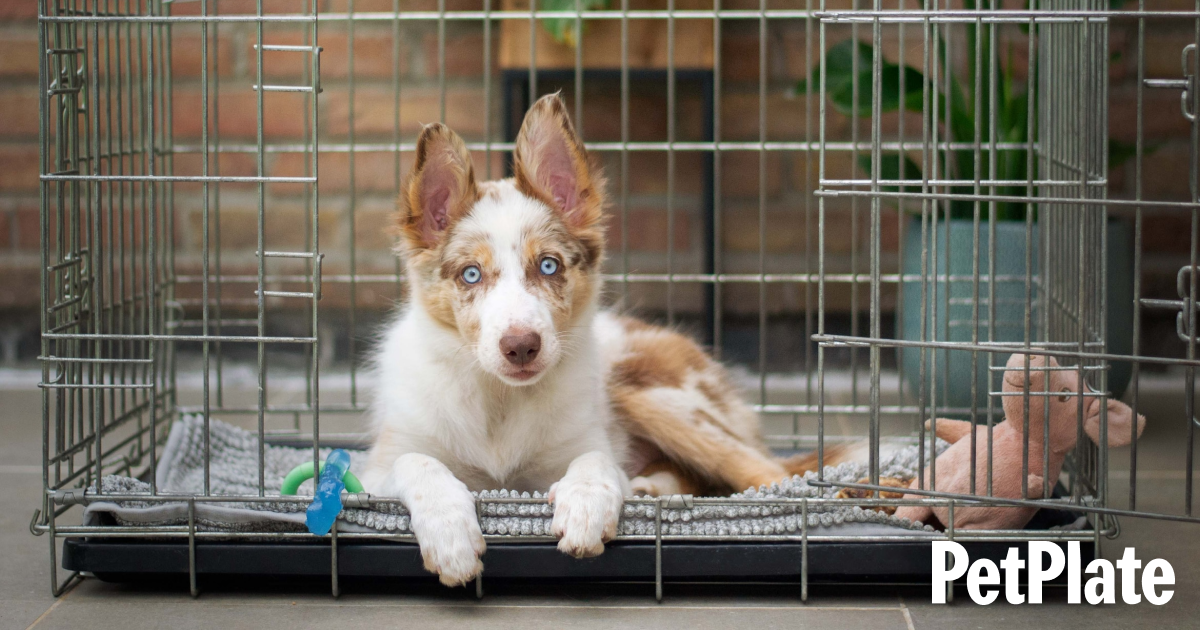
Crate training is an essential part of raising a well-behaved dog who has a quiet, safe spot to call their own. And the process of teaching your dog to love their crate is easier than you think.
Start with the essentials. You’ll need:
- A crate
- Blanket or crate pad
- Toys
- Treats
What Size Crate Should I Get for My Puppy?
Crates come in multiple designs and sizes. Some dogs prefer wire crates that allow them to see out on all sides, while others prefer an enclosed “airline crate” that feels more like a den. Both crate styles are suitable for crate training.
The size of the crate is important. Puppies should be able to lie down, stand, sit up and move around in the crate. Since puppies grow fast, look for a larger crate that will accommodate their adult size, and use a crate divider to section off a smaller space if needed.
It might seem like a good idea to purchase the largest crate possible, but puppies often use extra space as a built-in bathroom. Instead of going big, choose a crate that’s the right size for resting and nothing else.
Step by Step Guide for Crate Training a Puppy
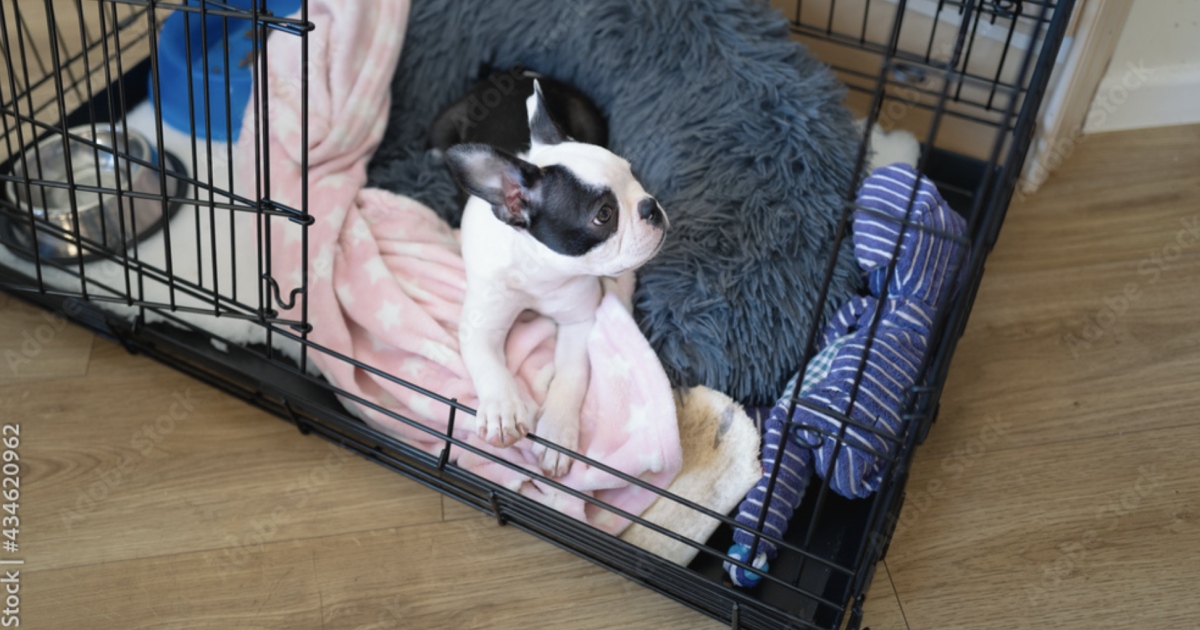
Some puppies love hanging out in their crates, while others need a little extra coaxing and positive reinforcement to learn that their crate is a safe space. Plan to devote time to crate training, in order to establish a lifelong positive association with their crates.
Set up the crate for comfort: Add a crate mat or blanket so your puppy will be comfortable.
Make introductions: Sit next to the crate and use a happy tone of voice to call your puppy over. Toss a few treats in the crate and encourage them to check it out. Leave the door open and praise their curiosity.
Choose the right time: Your puppy should see the crate as a spot to rest. Start by taking your puppy for a walk or playing a game of fetch and then lead them to the crate to rest. Limit their time in the crate to 10 minutes or so to start, and then build up to longer periods.
Establish a command: Just as you use verbal commands like “sit” and “stay” to teach your puppy new behaviors, you can use a term like “crate” or “kennel” to let them know it’s time to go into their crate.
Create positive associations: Consider offering meals in the crate, or giving your puppy a treat when they go into the crate. A long lasting chew will keep them occupied and help them associate the crate with a reward. Remember, never leave your puppy alone with a bone or other toy that could be a choking hazard.
Limit the time: It’ll take your puppy time to get used to their crate. Start with shorter sessions and build up to longer periods as your puppy feels more comfortable. Puppies under six-months-old should never be left in a crate for more than three hours without a bathroom break.
Sample Puppy Crate Training Schedule
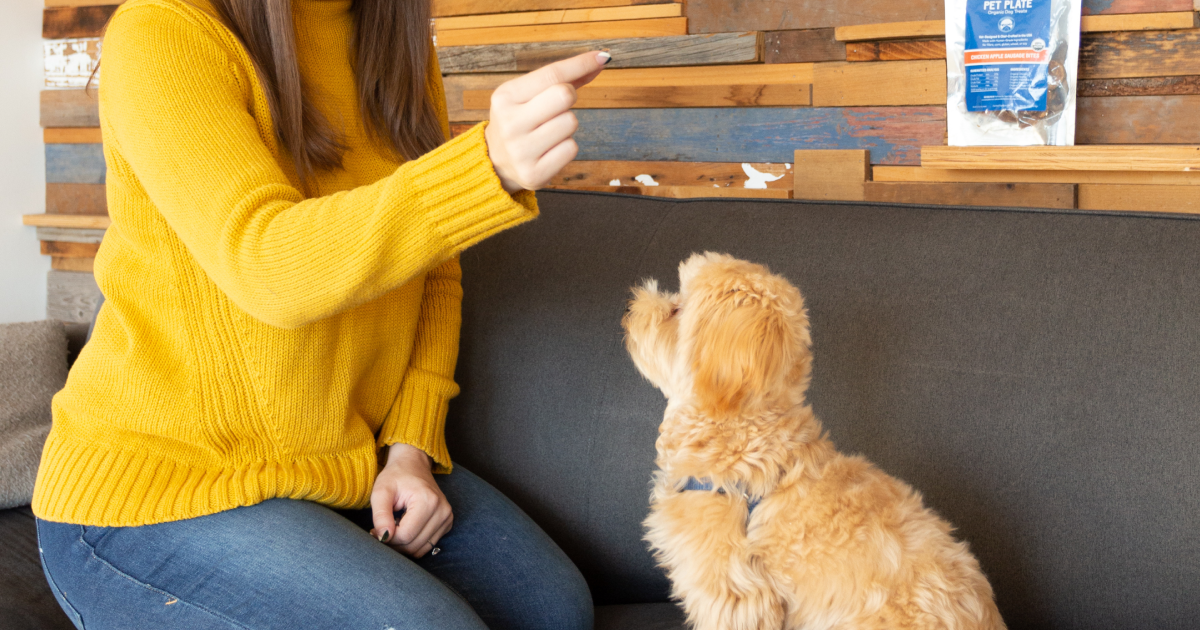
Puppies love routine! Including crate training as part of that routine will help your puppy learn what to expect, and teach them that their crate is just as much a part of their daily schedule as feeding, bathroom breaks, walks and snuggling.
Try this sample puppy crate training schedule:
7 a.m. Wake up and potty break
7:15 a.m. Playtime
7:30 a.m. Breakfast in their crate
7:45 a.m. Morning walk
8:15 a.m. Crate time
8:45 a.m. Potty break
9 a.m. Play time
10 a.m. Crate time
10:30 a.m. Potty break
10:45 a.m. Play time
11:30 a.m. Lunch in the crate
12 p.m. Play time
12:30 p.m. Potty break
1 p.m. Crate time
2 p.m. Potty break
2:30 p.m. Play time
3:30 p.m. Crate time
4:30 p.m. Afternoon walk
5:30 p.m. Supper in the crate
6 p.m. Potty break
6:30 p.m. Play time
7:30 p.m. Crate time
8:30 p.m. Potty break
9 p.m. Play time
10 p.m. Potty break
10:30 p.m. Crate for the night
Tips for How to Crate Train a Puppy at Night
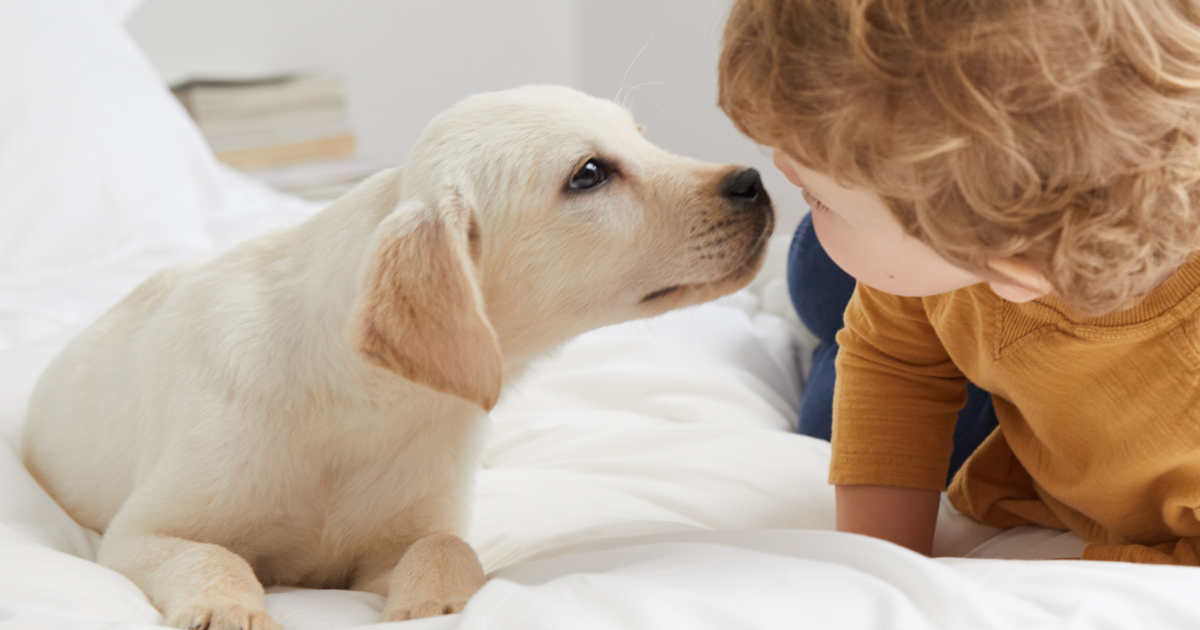
You’ll use the same strategies for crate training your puppy during the day in order to get them into their crates overnight.
- Make sure your puppy has a walk or play session and a potty break before bed.
- Offer your puppy a treat and use positive reinforcement when they go into their crate.
The location of the crate depends on you—and your puppy.
Some puppies are more relaxed if they can see or hear you and would prefer to have their crates in the bedroom. Others wake up at the slightest movement or noise, and might be more comfortable with their crates in another room. The crate should always be close enough that you hear your puppy if they wake up for a midnight potty break.
Frequently Asked Questions About Crate Training a Puppy
Crate training a puppy takes time and patience, and is likely to raise a lot of questions. Here are some of the most common things new puppy parents want to know about crate training.
How do you stop a puppy from crying in the crate at night?
It’s common for puppies to whine in their crates at night, especially in the beginning. Resist the urge to get your puppy out of the crate to offer cuddles and reassurance, because it reinforces that whining is the best way to get attention.
During the day, spend more time familiarizing your puppy with the crate by offering treats, toys and positive reinforcement every time your puppy is in the crate. Make sure your pup has had a potty break and lots of playtime before bed, so they’re tired when it’s time to go into the crate.
Is it OK to crate train a puppy at night?
Absolutely! Puppies need lots of rest for growth and development and getting a good night’s sleep in a cozy crate is part of that.
How long will a puppy cry in crate?
No two puppies are alike: Some will settle into their crates without a single whimper and others will cry for longer periods.
Puppies may cry in their crates due to boredom, loneliness, fear, or the need to go to the bathroom. Put the crate close to your bed, provide your puppy with a treat or other safe toy for mental stimulation, and make sure that their bathroom needs are met. This should help them settle down.
Should I ignore a puppy whining in crate?
It depends. You need to determine the reason your puppy is whining. If it’s because they’d rather play fetch at 1 a.m. than go to sleep, they should settle down after a while. A dog that needs to go to the bathroom should be taken outside for a potty break—no cuddling, no playtime, just potty—and then led back to their crate for the night.
Should I put my 8-week-old puppy in a crate at night?
Yes. Once a puppy is weaned, it’s time to start crate training. A crate is similar to a den where momma dogs raise their puppies; it’s a safe, cozy space where your puppy can seek comfort.
Does putting a blanket over a dog crate help?
The decision to cover (or not cover) your puppy’s crate depends on your puppy. Some puppies like to see what’s going on all around them and would prefer to have their crates uncovered, while others feel more soothed when the crate is enclosed and they see less movement.
Try covering your puppy’s crate with a blanket to see if it affects their behavior, and then follow their lead when deciding whether or not to keep it covered.
Help Train Your Puppy with Treats from PetPlate
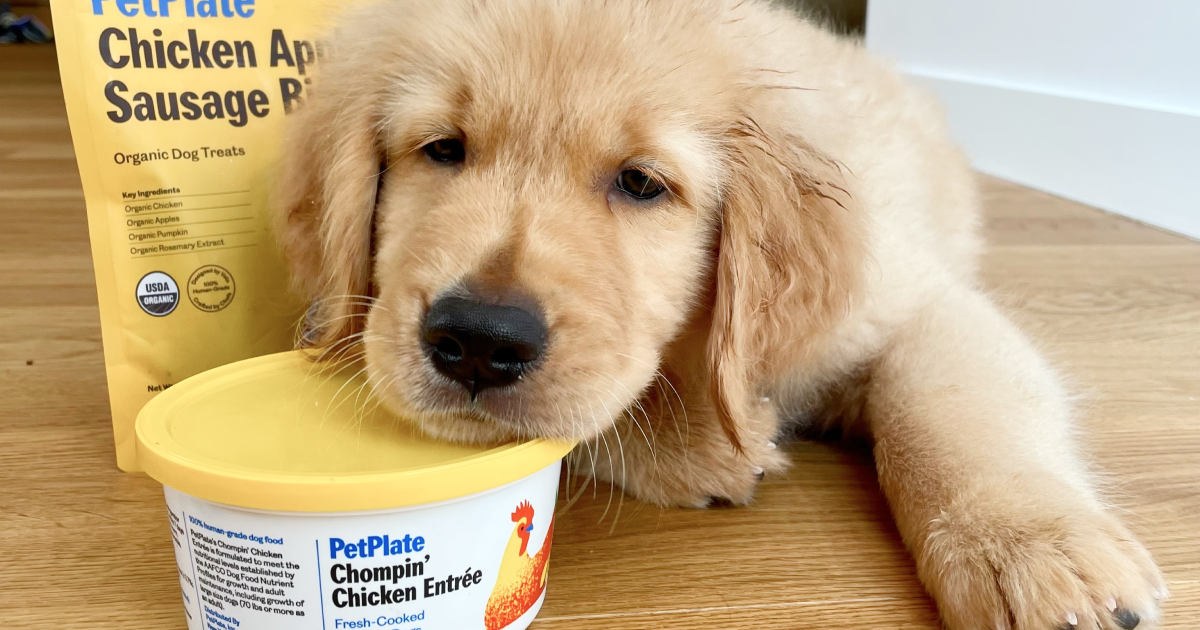
Crate training a puppy requires commitment and patience. Treats are also an essential part of crate training. Offering PetPlate treats are a great option to reward your puppy for going into their crate and relaxing quietly during crate time.
The more positive reinforcement (and yummy rewards) you provide, the more your puppy to associate the crate with good things, helping you achieve crate training success.
Want to help your pup simmer down and snooze in style? Receive 10% off a Revol crate from Diggs, when purchased through this link!
Got more puppy-related questions?
For a puppy feeding chart and advice on how to feed a puppy, check out our guide!

